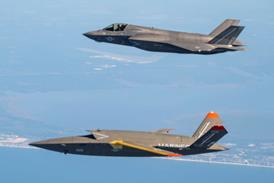DAVID LEARMOUNT / LONDON
NTSB report concludes that Rockwell Collins system "blacked out" during dramatic Brasilia in-flight incident
Electronic attitude director indicators (EADI) in a Comair Embraer EMB-120 Brasilia failed to help the pilots recover from dramatic, uncommanded roll and pitch manoeuvres in icing conditions, says the US National Transportation Safety Board (NTSB).
Having already reported on the 19 March 2001 event, the board says simultaneous failure of both EADIs could indicate that "the hazard may not be isolated", and suggests all Rockwell Collins AHC-85 EADIs have been inadequately tested following manufacture and after maintenance. It has recommended to the US Federal Aviation Administration that test procedures be upgraded and applied to all new and in-service equipment.
In the incident the aircraft was cruising at 17,000ft (5,180m) when it encountered icing conditions.
The aircraft first oscillated violently in roll, to maximums of 110° left and 130° right, followed by a 360° roll to the right and a change in pitch attitude to 60° nose down. During this process the captain's and co-pilot's EADIs "blacked out", according to the pilots, and they achieved recovery at 10,000ft when emerging into visual flight conditions below cloud, pulling 3.6g to halt the descent. The pilots diverted the damaged aircraft to West Palm Beach airport, Florida, and landed safely with no injuries to the three crew and 25 passengers.
In subsequent tests of the EADIs according to the production test requirement (PTR), the first officer's display was found to have an intermittent rate failure. However, the PTR does not test the equipment against its specified maximum performance in roll and pitch rate, not reached in the icing incident until almost all the violent roll oscillations had occurred.
The NTSB reports that the EADIs blacked out well before the specified performance limits had been reached, and benchtests in the performance area between the standard PTR criteria and specified performance limits caused both instruments to malfunction.
Rockwell Collins says it did not carry out tests beyond the PTR, and the unit's performance at limits could be inferred from the PTR test results. The NTSB has recommended to the FAA that the PTR should be extended to the equipment's maximum specified performance limitations, and that all AHC-85 units in service should be tested against the new PTR.
Pre-1983 manufactured Boeing 747s should be fitted with updated emergency evacuation slide inflation hoses, the NTSB has told the FAA. The recommendation follows an August 2001 passenger emergency evacuation from an Iberia 747-200 that had an engine fire at New York Kennedy Airport. A hose fault that had been notified to Boeing and the FAA in 1983 by hose manufacturer Preece caused two actuated slides to fail to inflate properly and passengers were injured. Only after the Iberia incident did Boeing issue a service bulletin recommending that inflation hoses in pre-1983 aircraft be replaced.Source: Flight International























